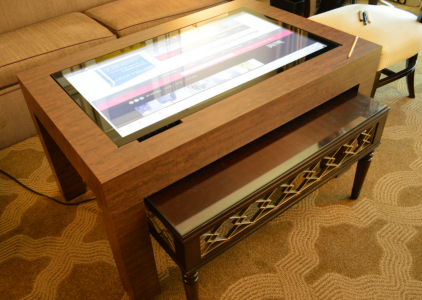I’m moving flats imminently. Cue constant daydreaming about furniture and furnishings for my new place that I may (or mostly may not) need. Now I will always be an Ikea girl at heart, Habitat too if I’m feeling flush or there’s a sale. However, if money were no object I would happily kit my place out in furniture that I could talk to… or at the very least make me a cuppa when I walk in the door. Ideal.
There are already some exciting examples of smart home devices getting gadget lovers like me hot under the collar. The Amazon Echo is flexing its connective muscles, as well as being a voice-activated Bluetooth speaker it can now link with other tech such as Philips Hue smart bulbs and Belkin WeMo power sockets. ‘Alexa’ enables you to control even more gadgets with your dulcet tones using one creepy always-listening hub. She even becomes more sentient as time goes on, which is amazing if not mildly terrifying.
Cima NanoTech wants to change family behaviour by circling away from individual multiscreening, which can be supremely antisocial, back towards group interaction with a table-scale tablet (ignore the hideous carpet). It would reduce fights over who’s next and let’s be honest… you’d struggle to lose this down the back of the sofa.
However, a growing concern of this resident tech boom is ‘design landfill’. We need make sure we’re not gleefully replacing long-lasting, crafted pieces with items that need constant upgrades. Consider how many phones you’ve had in the last eight years and compare that to how many tables or beds you’ve bought. Smart homeware needs to be detachable from the tech or built with years of upgrades in mind or we’ll fuel the dispensable consumer market and flood landfills with our poorly researched purchases.
CES thought that 2015 might have been the year of the connected home and, as excited as I am about phone-charging lamps and fridges that tell me when I’ve run out of milk (OK FINE wine), the figures still don’t indicate that this type of technology is being picked up at a very fast pace. The leading sales are still skewed to home-security and unsurprisingly come from higher income households. This is looking unlikely to change.
Giddiness over a mirror that reads us our daily horoscope is likely to die down as we realise that most of these gizmos are expensive gimmicks fuelling an already pretty lazy existence. I believe domestic connectivity is yet to reveal its true potential – to help those who struggle to live an independent life at home, especially for our ever-aging population. It has the ability to enhance medical treatment and avoid costly hospital visits. Cisco is one of the companies with a dream of transforming the world’s healthcare, generating accurate patient-to-doctor data by tailoring the Internet of Things to individual’s needs. Impressive.
So whilst it’s easy to get caught up in the excitement of a Clueless-style sentient wardrobe, let’s remember that a hand crafted table is for life (whether it can organise me a date or not). This tech shouldn’t solely subsist in expensive and potentially pointless gadgets. It should be evolved to help those who need it rather than those who can afford it. Full home voice-activation and remote care on the NHS? Now that’s innovation I can get behind.





